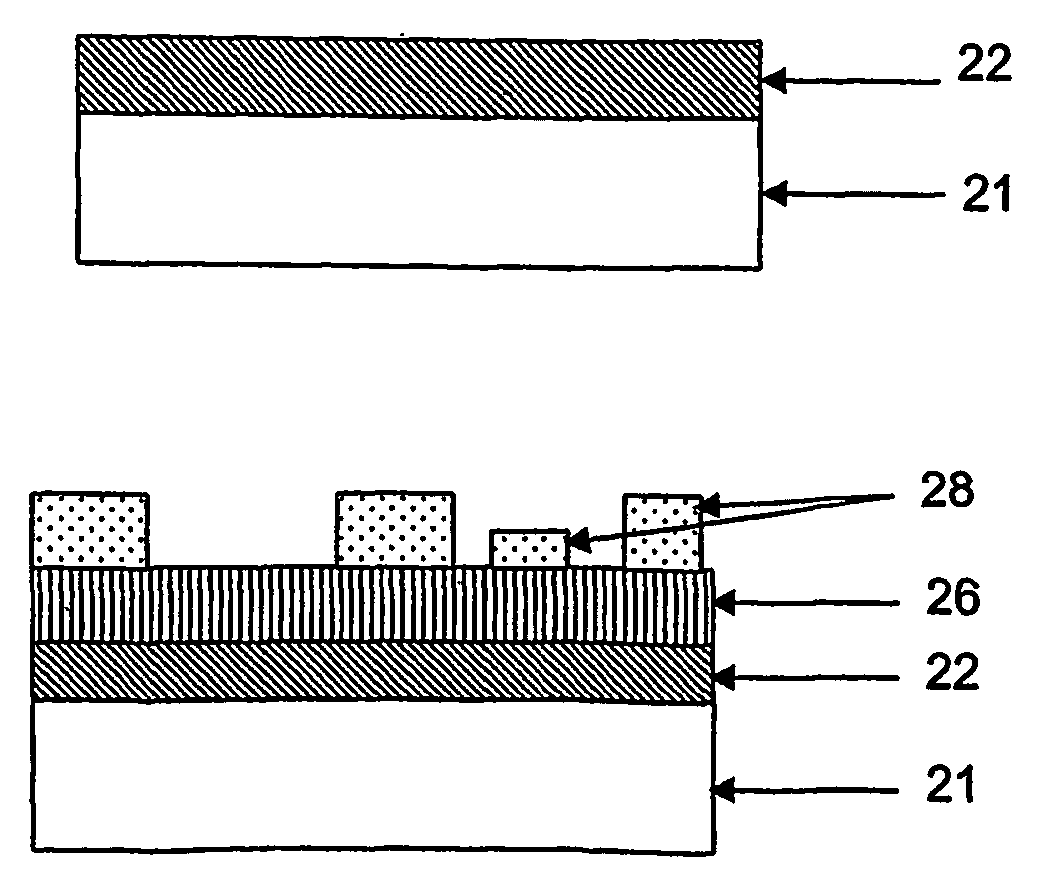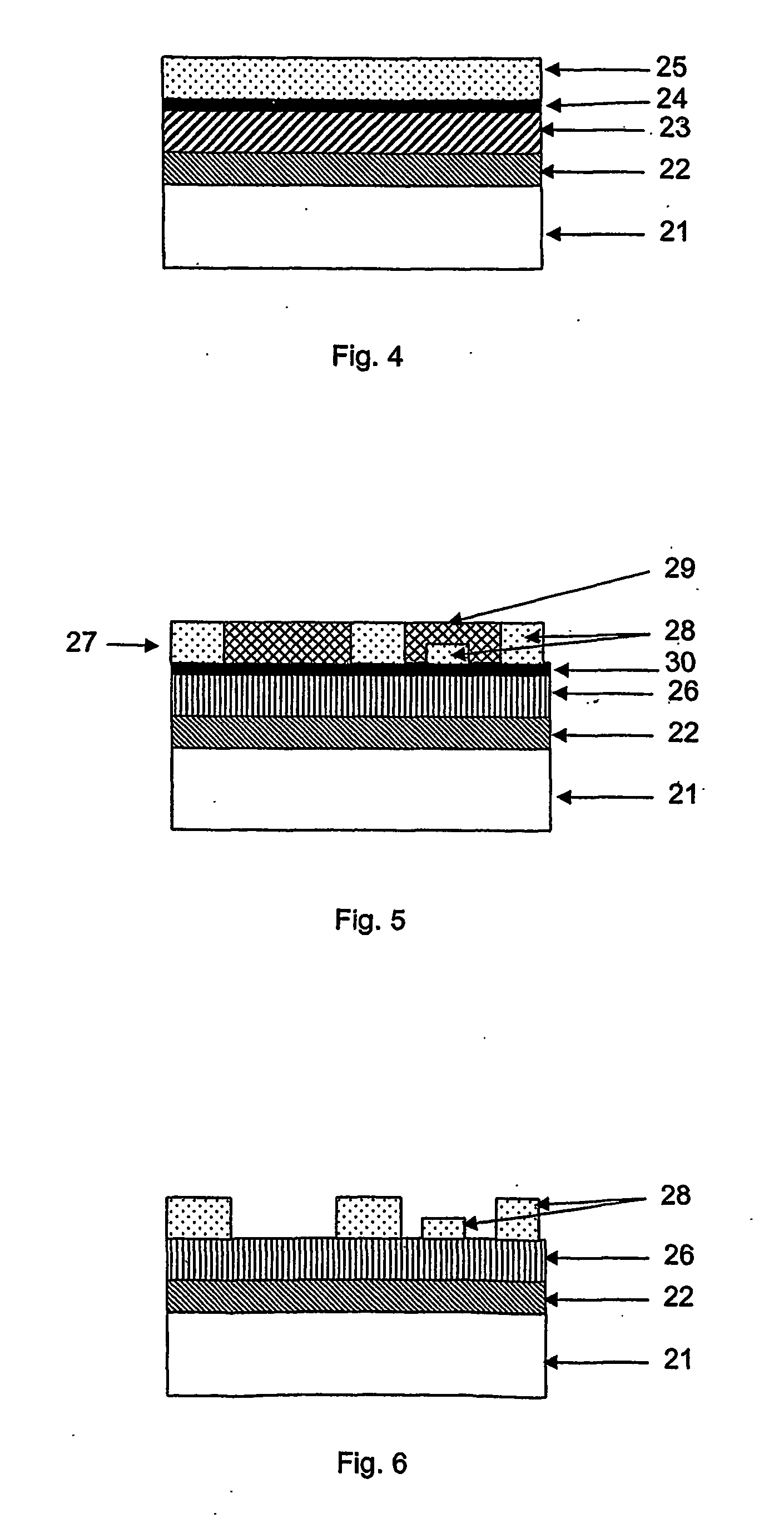Fabrication method for crystalline semiconductor films on foreign substrates
a technology of crystalline semiconductor and foreign substrate, which is applied in the field of fabrication method of crystalline semiconductor films on foreign substrates, can solve the problems of limited thermal stability of commercially available low-cost glass substrates, limited thermal budget of each fabrication step, and inability to meet the requirements of manufacturing, etc., and achieves the effect of reducing the minimum tim
- Summary
- Abstract
- Description
- Claims
- Application Information
AI Technical Summary
Benefits of technology
Problems solved by technology
Method used
Image
Examples
Embodiment Construction
[0078] An embodiment of the invention will now be described which has demonstrated an ability to produce large-grained, island-free polycrystalline silicon with arbitrary doping on planar glass substrates. However, while the process is described for a silicon film on a glass substrate it will be appreciated that the process is also applicable to other semiconductors and foreign substrates.
[0079] The formation of a device-quality polycrystalline silicon layer on glass is a two-step process, the first of which is to form a high-quality seed layer and the second is to form the device-grade layer over the seed layer. The formation of the seed layer involves the low-temperature (≦650° C.) formation of a polycrystalline semiconductor film on a supporting substrate by means of metal-induced crystallisation (MIC) of amorphous films of the same semiconductor material and is schematically shown in FIGS. 1 and 6. The metal and semiconductor must be chosen such that they can form an eutectic s...
PUM
 Login to View More
Login to View More Abstract
Description
Claims
Application Information
 Login to View More
Login to View More - R&D
- Intellectual Property
- Life Sciences
- Materials
- Tech Scout
- Unparalleled Data Quality
- Higher Quality Content
- 60% Fewer Hallucinations
Browse by: Latest US Patents, China's latest patents, Technical Efficacy Thesaurus, Application Domain, Technology Topic, Popular Technical Reports.
© 2025 PatSnap. All rights reserved.Legal|Privacy policy|Modern Slavery Act Transparency Statement|Sitemap|About US| Contact US: help@patsnap.com



